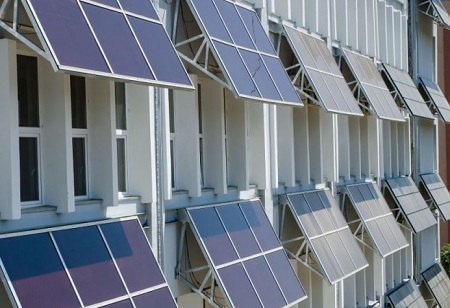The second-place finisher in this year's "Solar Decathlon" competition in the US was a team of IIT Bombay students who constructed a home in Mumbai using cutting-edge technologies to improve air quality in a hot and humid environment. The longest-running student competition in the US, the "Solar Decathlon" challenges student teams to design and construct cutting-edge, highly efficient structures that are powered by renewable energy.
Ball State University spent approximately two years developing and building their zero-energy home, which helped them win the "2023 Build Challenge" competition. According to a release, the 'Alley House' team worked with their
neighbourhood to create a zero-energy future for historically underutilised urban lots through the building of a high-performance, lovely, and practical family. The University of British Columbia and Indian Institute of Technology Bombay placed second and third, respectively, in this year's Build Challenge, according to the Department of Energy (DOE). US Deputy Secretary of Energy David Turk met with rivals on Friday. "As we work to build America's clean energy future and implement President Biden's ambitious climate agenda, we need dedicated leaders who are ready to undertake any challenge before them with pride and passion," Turk said.
This past weekend at the Solar Decathlon, "I was proud to meet so many inspiring students and faculty, each of whom demonstrated the ingenuity and enthusiasm critical to ensuring the benefits of clean energy will be spread far and wide," he added. DOE claimed that Project Vivaan, developed by the SHUNYA team of IIT Bombay, is built and designed for warm, humid climates.
Net positive energy, net zero carbon, and net zero water are the main goals of the 1,416 ft2 house. The team used liquid desiccant for dehumidification and cooled water for temperature control when designing the home's cooling system. Residents would be able to regulate the temperature, humidity, lights, and occupancy thanks to internally created home automation on an open-source platform, the company claimed.
